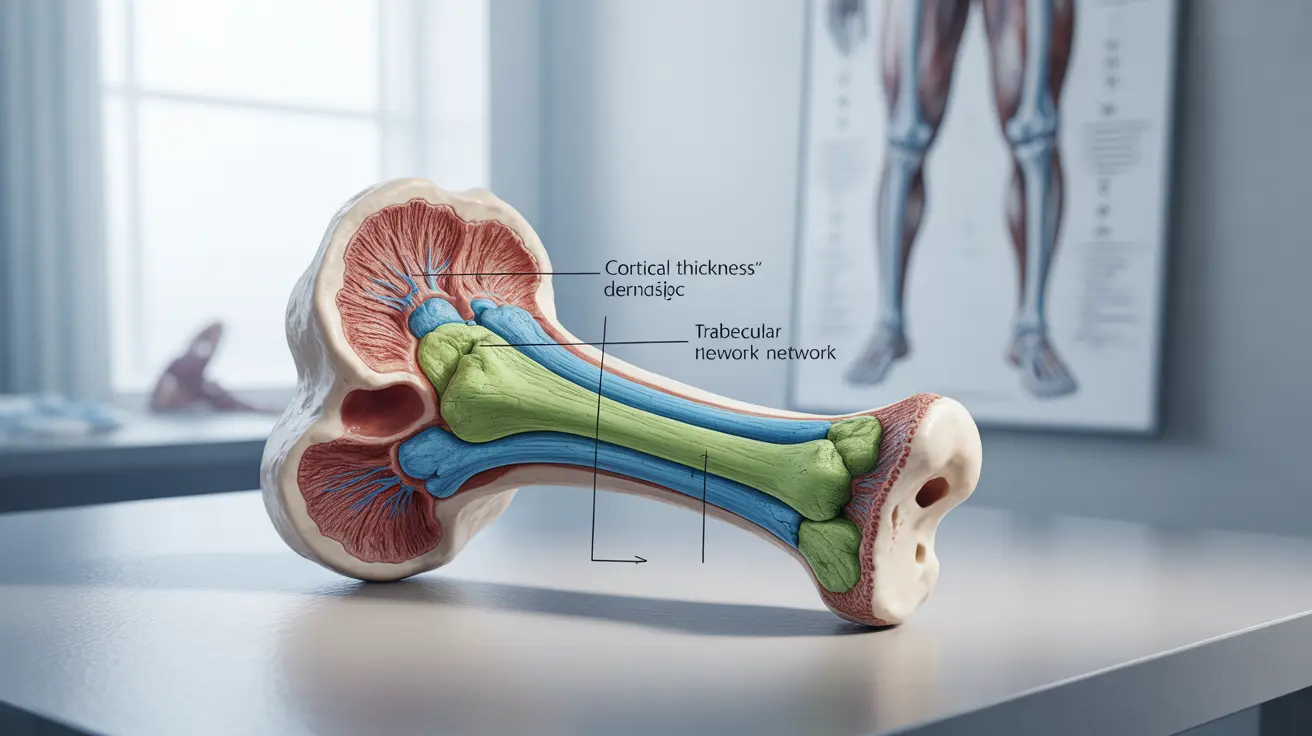Understanding whether bone density can be restored is crucial for millions of people affected by bone loss and osteoporosis. While complete reversal of bone loss may not always be possible, there are several effective strategies and treatments that can help improve bone density and reduce the risk of fractures.
In this comprehensive guide, we'll explore the various methods available for improving bone density, from medical interventions to lifestyle modifications, helping you understand your options for maintaining and potentially enhancing bone health.
Understanding Bone Density and Loss
Bone density naturally changes throughout our lives, with peak bone mass typically occurring in our early 30s. After this point, bone loss gradually begins, but various factors can accelerate this process, leading to conditions like osteopenia and osteoporosis.
The good news is that bone is living tissue that continuously undergoes remodeling, meaning there are opportunities to influence its density through various interventions.
Medical Treatments for Improving Bone Density
Bone-Building Medications
Several FDA-approved medications can help slow bone loss and, in some cases, actually increase bone density:
- Bisphosphonates (such as Fosamax and Boniva)
- Hormone therapy (including selective estrogen receptor modulators)
- Biologics (like Prolia)
- Anabolic agents (such as Forteo and Tymlos)
The Role of Supplements
Essential supplements that support bone health include:
- Calcium (recommended daily intake varies by age and gender)
- Vitamin D3 (crucial for calcium absorption)
- Vitamin K2 (helps direct calcium to bones)
- Magnesium (supports vitamin D metabolism)
Lifestyle Interventions for Bone Health
Exercise and Physical Activity
Specific types of exercise can significantly impact bone density:
- Weight-bearing exercises (walking, jogging, dancing)
- Resistance training with weights or bands
- Balance exercises to prevent falls
- High-impact activities (when appropriate and safe)
Dietary Considerations
A bone-healthy diet should include:
- Calcium-rich foods (dairy products, leafy greens, fortified foods)
- Protein-rich foods (lean meats, fish, legumes)
- Foods high in vitamins D and K
- Limited alcohol and caffeine consumption
Prevention Strategies
Taking proactive steps to prevent further bone loss is essential:
- Regular bone density screenings
- Maintaining a healthy weight
- Avoiding smoking
- Reducing fall risks in the home
- Managing medications that may affect bone health
Frequently Asked Questions
Can bone density be increased or restored after an osteoporosis diagnosis?
Yes, bone density can be improved after an osteoporosis diagnosis through a combination of medications, proper nutrition, and weight-bearing exercises. While complete restoration may not always be possible, significant improvements can be achieved with consistent treatment and lifestyle modifications.
What medications are available to help improve bone density and reduce fracture risk?
Several medications can help improve bone density, including bisphosphonates (Fosamax, Boniva), hormone therapy, biologics (Prolia), and anabolic agents (Forteo, Tymlos). These medications work through different mechanisms to either slow bone loss or stimulate new bone formation.
How do calcium, vitamin D, and exercise contribute to restoring or maintaining bone density?
Calcium provides the building blocks for bone tissue, while vitamin D ensures proper calcium absorption and utilization. Exercise, particularly weight-bearing and resistance training, stimulates bone formation and strengthening. Together, these elements create an optimal environment for maintaining and potentially improving bone density.
Is full reversal of osteoporosis and complete restoration of bone density possible?
While complete reversal of osteoporosis is rarely possible, significant improvements in bone density can be achieved through proper treatment and lifestyle changes. The focus should be on stopping further bone loss and reducing fracture risk while working to improve bone density where possible.
What lifestyle changes can help prevent further bone loss in people with low bone density?
Key lifestyle changes include regular weight-bearing exercise, maintaining adequate calcium and vitamin D intake, avoiding smoking, limiting alcohol consumption, reducing fall risks, and following prescribed treatment plans. Regular medical monitoring and bone density screenings are also essential.




